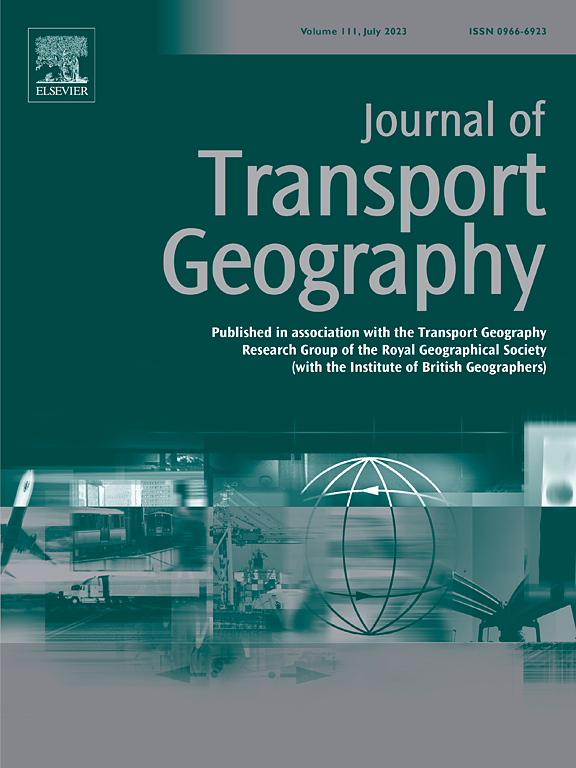Multisource methodology for traffic analysis zone definition based on the fusion of Remote Sensing, OpenStreetMap, and Floating Car Data
IF 6.3
2区 工程技术
Q1 ECONOMICS
引用次数: 0
Abstract
The choice of an appropriate Traffic Analysis Zone (TAZ) system is a critical step of travel demand modelling that is often overlooked. Studies have approached this process with the goal of favouring the homogeneity of socio-economic and geographic characteristics of the zones, also possibly taking into account the minimisation of the number of intrazonal trips. However, beyond the application of general guidelines and individual experience to specific case studies, the definition of a formal approach is still an unsolved issue. Nevertheless, the rapid ICT development and the novel big data sources allow to enhance traditional models by exploiting additional land use and spatio-temporal mobility features. This paper proposes a multisource data-driven method to support TAZ definition by identifying, through a clustering approach, zones that are homogeneous from the point of view of activities, network characteristics, and land-cover. To this end, in the proposed approach, satellite remote sensing image segmentation, OpenStreetMap layers, and Floating Car Data (FCD) are jointly exploited to define a TAZ configuration, which can be directly used as a support for planning purposes. The procedure is experimentally validated with a case study associated with the EUR district of the city of Rome, Italy, using satellite Sentinel-2 imagery, the corresponding OpenStreetMap data, and an FCD set containing more than 1.500.000 trips.
基于遥感、OpenStreetMap和浮动汽车数据融合的多源交通分析区域定义方法
选择合适的交通分析区(TAZ)系统是交通需求建模的关键步骤,但往往被忽视。研究这一进程的目的是使各区域的社会经济和地理特征趋于一致,并可能考虑到尽量减少区域内旅行的次数。然而,除了将一般准则和个人经验应用于具体案例研究之外,正式方法的定义仍然是一个未解决的问题。然而,信息通信技术的快速发展和新的大数据源使得利用额外的土地利用和时空流动性特征来增强传统模型成为可能。本文提出了一种多源数据驱动的方法,通过聚类方法识别从活动、网络特征和土地覆盖角度来看同质的区域,从而支持TAZ的定义。为此,在该方法中,卫星遥感图像分割、OpenStreetMap层和浮动汽车数据(FCD)被联合利用来定义TAZ配置,该配置可以直接用作规划目的的支持。通过与意大利罗马市EUR区相关的案例研究,使用Sentinel-2卫星图像、相应的OpenStreetMap数据和包含超过150万次行程的FCD集,对该程序进行了实验验证。
本文章由计算机程序翻译,如有差异,请以英文原文为准。
求助全文
约1分钟内获得全文
求助全文
来源期刊

Journal of Transport Geography
Multiple-
CiteScore
11.50
自引率
11.50%
发文量
197
期刊介绍:
A major resurgence has occurred in transport geography in the wake of political and policy changes, huge transport infrastructure projects and responses to urban traffic congestion. The Journal of Transport Geography provides a central focus for developments in this rapidly expanding sub-discipline.
 求助内容:
求助内容: 应助结果提醒方式:
应助结果提醒方式:


